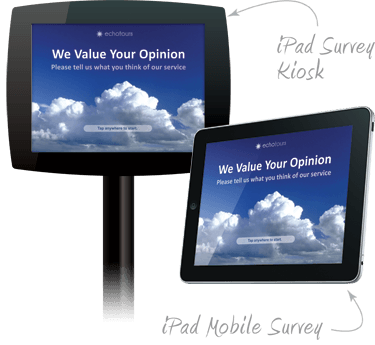21 Jan 13 Tips on understanding your market
The Australian Chamber of Commerce and Industry’s latest survey of investor confidence has found business owners at their most confident since December 2010.
We are continuing to see this improvement in expectations flying from a new government and a new administration with different economic agenda” Chamber Chief Economist Greg Evans said in Canberra recently.
 The survey finds that while business expectations improved significantly over the September quarter, actual business conditions remained relatively unchanged at low levels over the quarter. Despite the welcome improvement in business expectations, from past experience, this optimism is unlikely to translate into actual outcomes given the continued weakness in current trading conditions[1]
The survey finds that while business expectations improved significantly over the September quarter, actual business conditions remained relatively unchanged at low levels over the quarter. Despite the welcome improvement in business expectations, from past experience, this optimism is unlikely to translate into actual outcomes given the continued weakness in current trading conditions[1]
It always amazes me that we rely so strongly on economic conditions to achieve business growth and profitability. The economy alone will not achieve business success. As a sensible business community we need to learn and understand more about what is happening out there, and what will drive business growth. And it should come as no surprise that your customers – past, current and potential – hold the secrets to your success.
A good understanding of what’s happening now, combined with an analysis of current and future trends, will help you predict and plan for the future.
How do you achieve that?
What is essential to realise is that the market has fundamentally changed over the last few years and we cannot rely solely on what we know from the past. Consumers and business have clearly changed in how they buy, what they expect, and how they wish to be communicated with. Just think for a moment about some of the major trends that have occurred over the last few years that may well be influencing how your current and potential customers purchase from you (or why past customers no longer purchase from you). Think about some of the key trends out there – to name just a few:
- the influence of smartphones (90% of 25-34 year olds in Australia have smartphone devices; penetration is now at 65% overall)
- the role of the internet in purchase decisions
- media fragmentation
- your stretched resources – everywhere people demanding more for less
- social media
- the global reach of competitors
- the differences between Baby Boomers, Gen X and Gen Y…..and the others!
I’ve put together some general tips on how to plan and design your customer research program, and achieve the business growth and profit you seek.
1. Frame the problem or opportunity
What is it that you’re trying to achieve? Is it customer retention? Acquisition? Lead generation? Brand penetration? Invest some time with your team and stakeholders to really determine what you are looking for in terms of business success. Once you’ve established this you can frame the problem or opportunity and set some specific objectives and scope around what insights you need to grow the business.
2. Develop a research plan
Once you’ve completed stage 1 develop a “SMART” plan to achieve the data and insights you need. Prioritise what you need to know and set some timeframes, but be realistic and allow sufficient lead-time to achieve a quality outcome. Research can be turned around very quickly (often over a weekend if need be), however the ideal approach with a positive cost vs benefit outcome will allow for ongoing learning, and issues to be tested and evolved from concept to execution over say a 12 month period. Be prepared to build in a return on investment measure or key performance indicator.
3. Incorporate your big data
 Big data sources such as CRM systems, DIY research, point of sale, web analytics/search measurement platforms, customer data warehouses, mobile analytics and social media are providing organisations with lots of data, but it is rarely used effectively. We recommend that you understand and utilise what is available so that you can invest precious $$ on the data gaps to provide new insights.
Big data sources such as CRM systems, DIY research, point of sale, web analytics/search measurement platforms, customer data warehouses, mobile analytics and social media are providing organisations with lots of data, but it is rarely used effectively. We recommend that you understand and utilise what is available so that you can invest precious $$ on the data gaps to provide new insights.
4. Ensure integrity in the data
You would never build an office block, your new home or even a beach shack without the appropriate foundations. You don’t see them but rely on them and trust their reliability without question. The same can apply to data integrity; once it’s in a well-written, visually appealing report, can you really trust the data that supports your next stage of investment? All that time, money and effort … make sure you put some thinking and energy into ensuring your data and insights are trustworthy and reliable so that decisions can be rapidly implemented with confidence every time.
5. Ask the right questions
Question design is both an art and a science and is critical in the design of a successful research program. Keep the questions simple and understandable to the target audience – use plain English and avoid technical terms or jargon that you may understand but your market may not. Aim to use a combination of unprompted and prompted questions to validate responses, and avoid double-barrel questions. Think about your question types when considering how people will be answering, in other words, what will work in a telephone survey will be unlikely to work on a smartphone with a limited size screen.
Invest in some well-structured qualitative research that will give you good understanding of the psychology behind the responses, and help you construct the right questions for the right people.
6. Ask the right people
Sample structure is so crucial to ensure you achieve not only actionable insights but high quality data with integrity. Are you seeking active users to measure experience, potential new users of the product or service, or past users who have drifted away from your business? How will you segment the data once you’ve collected it? What are the demographics, psychographics or firmographics you need to effectively target that group, and what will be a minimal acceptable sample of those sub-segments? Start at the individual sub-segments you are potentially targeting and aggregate up. Don’t start with a total number and then hope you have enough responses at the end to do some meaningful analysis by segment. Actively manage the process.
Beware of the huge growth of consumer panels. With continually developing technologies and the DIY phenomena many providers are selling panels for you to survey. These are not going to be random samples; they’re convenience samples and often made up of people who self-select into the system for the cash incentive, or worse still, are not who they say they are. So make sure you use some clever screening questions to eliminate problems where possible.
7. Ask them in the right way
Choosing the correct methodology which is easy and convenient for the respondent is critical to success so understand, utilise and value the pros and cons of traditional research methods like focus groups, telephone surveys, self-completion surveys (on- and off-line), indepth interviews etc. You should also be incorporating innovative technologies such as mobile research, social media analysis, behavioural change, big data analysis, change management and predictive analytics. It’s always a balance … and don’t necessarily hold with the theory that everything new is better – it’s not! As they say, ‘all that glitters is not gold’!
New technology has invited an avenue of DIY online survey tools; these have benefits if used in appropriate ways, where data collection is appropriately designed and carefully analysed, with a goal to achieve actionable insights interpreted and applied correctly.

8. Respect the so-called respondent and their privacy
All survey ‘respondents’ are actual people with feelings, emotions and attitudes. Treat them with the professionalism and respect you would expect from an employee or representative from your own organisation; don’t waste their time with overly long surveys, rather engage them as part of the process. Whether recruited at random, from your customer base or community, or a specific panel of respondents, all those surveyed should be protected under the Privacy Act and a professional set of standards. Beware of using DIY tools that may compromise your database by uploading it to a server based overseas. Check with suppliers about how they comply with privacy laws and how they value the people being surveyed.
9. Choose the right analytical tools
It is imperative that raw data is collated appropriately, analysed and reported accurately, and that risks are minimised. Even if you are using DIY research tools, or perhaps aiming to integrate ‘big data’ into your strategic planning, ask how your analytical tools or predictive analytics will help you answer the ‘why’ questions, reduce the risk to your organisation and provide you with the actionable insights you need to assist you predict and plan for the future.
10. Seek actionable insights
The reality is that short-cuts in research design, sampling and methodology through many new generation survey options have led to poor levels of actionable insights, poor investment decisions and the demise of many solid businesses and social change programs.
Work with experienced strategic researchers and marketers, ideally those with QPMR accredited consultants (Qualified Practicing Market Researchers) in the team, with the experience and knowledge that will deliver the insights you need. Demand and expect a partnership relationship with your team or external supplier so that expectations are clearly defined and outcomes achieved.
11. Communicate results quickly and effectively
Success and higher ROI
not achieved by the capture and storage of
data and insights alone. The successful companies now and into the future are those that gain a strategic competitive advantage through the speed with which they turn data into information, and information into knowledge. At the outset consider how you will communicate the results to the key
stakeholders, what will work most effectively. This could include simple PowerPoint presentations, workshops, visual reporting tools, online reporting aids supported with video of respondents’ views, integrated management dashboards, or specific supervisor-led training and communication programs based on research results.

12. Consider the behavioural change aspects
Organisations are spending millions of dollars to understand the art of creating change, motivating their staff and stakeholders and creating a sustainable momentum towards success. Now more than ever, change programs need to be coordinated with your marketing and customer experience program.
The time to begin your change strategy is now as business confidence is growing. It’s time to do something constructive – not reactive. Reactive decisions are rarely strategic and often fatal. Engage in creative change strategies now and lead the curve, don’t pass out trying to overcome the hurdle!
The process is strategic, simple and makes sense within an organisational context. Phase one is based on engagement with an organisation to determine what changes would benefit. Ideally this would be part of the research or customer experience program and involve clear strategies and insights for implementation. This involves a combination of qualitative and quantitative research with the development of structured analysis and reporting that is user friendly and achievable.
The second phase involves the clear and concise communication of results. This occurs through a consultative approach, implementing change throughout the organisation in a positive and healthy way that is overseen and supervised, ensuring consistency and achievement of the desired outcomes.
The consistency of new benchmarks and standards follows with systematic tracking of results, reporting and even an incentive driven program, if applicable, to ensure the desired changes are made and maintained. This can be followed up with appropriate accreditation or other industry based training.
 13. Measure and learn
13. Measure and learn
The term “validated learning” was coined by Eric Ries in his book titledThe Lean Start-up[2]. Validated learning refers to using small, concise experiments to test and learn what customers want by observing their behaviour in relation to real or even simulated offers and value propositions. The thesis of the Lean Start-up is that competitive advantage comes from being able to learn fast, and those that learn the fastest will both survive and thrive in today’s increasingly competitive world.
[1] The October 2013 ACCI Survey of Investor Confidence
[2] The Lean Start-up, E. Ries, Crown Business; First Edition (September 13, 2011)
newfocus is a national market research company, specialising in strategic market research and social research, with offices in Melbourne, Sydney & Adelaide.

